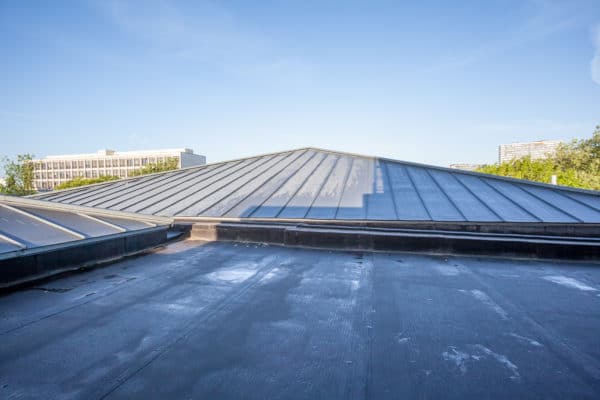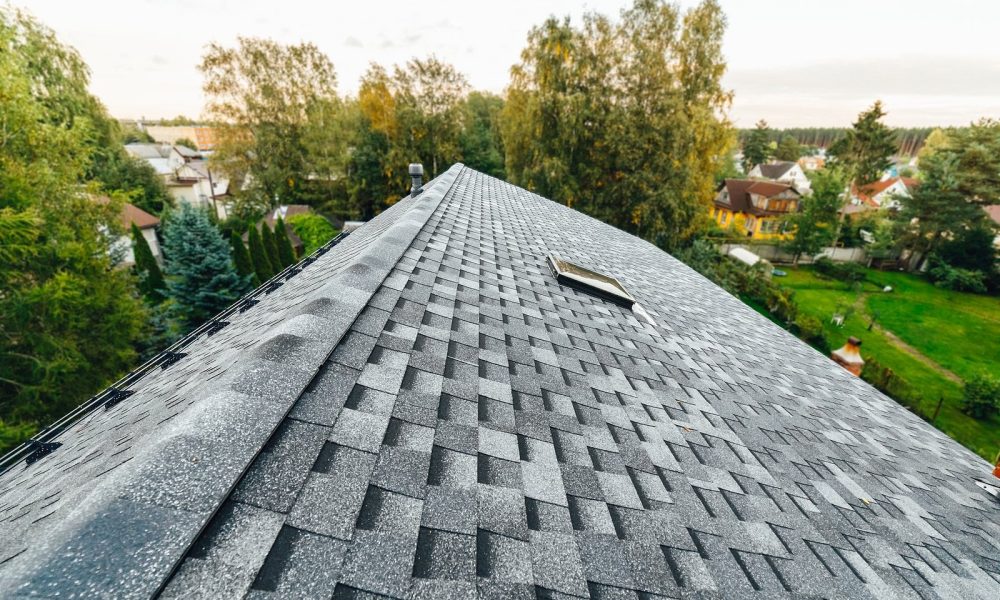Commercial flat roofing plays a crucial role in protecting businesses, ensuring energy efficiency, and maintaining structural integrity. As 2025 approaches, advancements in materials and techniques are reshaping the industry, making it more important than ever to choose the right contractor for the job. A reliable contractor can mean the difference between a durable, long-lasting roof and costly repairs down the road.
Finding trustworthy professionals in this competitive market can be challenging. With so many options available, businesses need to focus on expertise, reputation, and innovation to make informed decisions. Understanding what to look for in a contractor is the first step toward securing a roofing solution that meets both budget and performance needs.
Key Features of Commercial Flat Roofing Systems
- Durability
Commercial flat roofs are designed to withstand heavy foot traffic, extreme weather, and UV exposure. Materials like EPDM, TPO, and PVC provide resistance to harsh conditions, ensuring longevity. Proper installation by a skilled commercial flat roofing contractor extends the lifespan of these systems. - Energy Efficiency
Many systems incorporate reflective materials to reduce heat absorption. This feature helps lower energy costs and minimize the building’s environmental impact. Examples include white TPO membranes and reflective coatings for existing roofs. - Ease of Maintenance
Flat roofing systems offer simpler inspection and maintenance compared to pitched roofs. Accessing flat surfaces for routine checks ensures timely repairs, avoiding extensive damage. - Cost-Effectiveness
Although initial installation may vary in cost, flat systems are cost-effective in the long term. Reduced maintenance expenses and energy savings add to their overall affordability. - Versatile Design
Flat roofs provide usable space for equipment like HVAC units or solar panels. Advanced designs allow businesses to optimize roof utility without compromising structural integrity.
Common Issues in Flat Roof Maintenance and How Contractors Address Them

Commercial flat roofs often encounter unique challenges due to their structure, material, and environmental exposure. Identifying these issues early and hiring a skilled commercial flat roofing contractor are crucial for prolonging the roof’s lifespan.
1. Water Ponding
Flat roofs can experience water ponding, where water accumulates in low areas. Prolonged water exposure weakens roofing materials, leading to leaks and damage. Contractors address this by ensuring proper drainage through the installation of tapered insulation, cleaning debris from drains, or adjusting pitch levels during inspections.
2. Membrane Damage
Tears, punctures, or blisters in the membrane may occur due to foot traffic, weather, or aging materials. Contractors conduct a thorough assessment and use techniques like patching damaged areas or applying reinforced coatings to restore membrane integrity.
3. Roof Leaks
Leaks result from deteriorated seals around penetrations, such as HVAC units or skylights. Contractors locate entry points and reseal them with advanced waterproofing materials, reducing the chances of recurring leaks.
4. UV Degradation
Constant UV exposure can cause cracking and reduced elasticity of roofing materials. To manage this, contractors apply reflective coatings or opt for UV-resistant materials like PVC or TPO membranes during repairs or replacements.
5. Structural Stress
Heavy equipment like HVAC units can create stress on specific areas, causing cracks or sagging. Contractors redistribute loads by reinforcing structural supports or repositioning equipment, maintaining roof stability.
By addressing these issues promptly and ensuring regular inspections, contractors help businesses protect their investment. Finding reliable professionals often begins when businesses explore options to Visit Website of a trusted commercial flat roofing contractor to evaluate services, expertise, and solutions tailored to their roofing needs.
Why Experienced Professionals Are Essential for Flat Roof Installations
Experienced professionals ensure precise flat roof installations that maximize durability and efficiency. Commercial flat roofing systems, like EPDM or TPO, demand specialized knowledge of materials and their application processes. Without expertise, installation errors can lead to major issues, including water leaks and structural damage, increasing repair costs.
Contractors with experience assess building requirements and recommend the most suitable solutions. For example, they consider load-bearing capacities, drainage design, and insulation needs. These assessments optimize the roof’s performance and longevity, which protects businesses from unnecessary disruptions.
Reliable contractors use advanced techniques and tools to meet industry standards. They follow manufacturer guidelines to install roofing materials effectively, preserving warranties. This adherence not only ensures quality but also builds client trust, making them valuable partners for large-scale commercial projects.
By hiring skilled professionals, businesses mitigate risks associated with substandard workmanship. This investment reduces maintenance expenses and energy inefficiencies, which lowers overall operational costs. To connect with these reliable experts, businesses searching for a commercial flat roofing contractor can start by conducting online research or visiting trusted contractor websites.
Tips for Choosing the Best Flat Roofing Material for Your Needs
Selecting the best flat roofing material balances durability, energy efficiency, and budget constraints. Materials like EPDM, TPO, and PVC dominate commercial flat roofing due to their proven reliability.
- Evaluate Durability
EPDM, also known as rubber roofing, withstands extreme weather and heavy foot traffic, making it suitable for businesses in harsh climates. PVC’s resistance to punctures and chemicals ensures long-term performance in industrial settings. - Prioritize Energy Efficiency
TPO and PVC roofs include reflective surfaces that decrease heat absorption, reducing cooling costs in warmer regions. Choosing energy-efficient materials helps businesses lower energy consumption and comply with environmental codes. - Consider Maintenance Requirements
EPDM is simple to maintain due to its single-layer design, while TPO and PVC require skilled professionals for upkeep. Consulting a knowledgeable commercial flat roofing contractor ensures the chosen material aligns with long-term maintenance expectations. - Assess Cost vs. Longevity
PVC offers high durability but comes at a higher upfront cost, while TPO provides a cost-effective option with moderate longevity. EPDM features affordability and a long lifespan, making it a versatile solution for varying budgets. - Factor in Structural Compatibility
Material flexibility is critical for accommodating equipment like HVAC systems. TPO and PVC’s strong seams support structural loads without leakage risks, and EPDM adapts well to unique roof shapes. - Review Local Climate Impact
Consider local climate conditions when selecting materials. TPO and PVC excel in hot environments, while EPDM performs well in cold or mixed weather. A contractor can provide tailored recommendations based on regional factors.
Using these considerations, businesses can ensure their roofing investment maximizes performance and minimizes maintenance costs. For additional guidance, they can visit a trusted contractor’s website specializing in commercial flat roofing solutions.
Cost-Effective Solutions for Commercial Flat Roofing Repairs
Cost-effective repairs for commercial flat roofing focus on addressing problems efficiently without compromising quality. Skilled contractors use materials such as EPDM, TPO, or PVC to deliver long-lasting results within budget constraints. Repair strategies include patching membrane damage, sealing leaks, and applying reflective coatings to mitigate UV degradation and reduce energy expenses.
Preventive maintenance minimizes costly repairs. By conducting regular inspections, contractors identify potential issues, such as water ponding and structural stress, before they escalate. Proper drainage solutions, such as adding tapered insulation, prevent water accumulation that could lead to further damage.
Contractors offering warranties on repair work provide added reliability. Businesses can evaluate a contractor’s reputation and expertise by reviewing projects on their profiles or visiting a website dedicated to commercial flat roofing solutions. Opting for qualified professionals ensures tailored repair strategies that extend a roof’s lifespan, ultimately saving costs in the long term.
Energy Efficiency Benefits of Modern Flat Roofing Systems
Modern flat roofing systems enhance energy efficiency through advanced materials and reflective coatings. Roofing options like TPO and PVC include reflective membranes that reduce heat absorption, lowering cooling expenses in hot climates. These materials also help businesses decrease energy consumption, which aligns with sustainability goals.
Additional insulation layers in commercial flat roofs improve thermal resistance. This reduces temperature fluctuations inside buildings, decreasing heating and cooling demands and ensuring consistent indoor comfort. Contractors often recommend tapered insulation systems to support both energy efficiency and drainage.
Solar panel integration is simplified with flat roofing designs. Businesses can benefit from renewable energy solutions without structural modifications. Pairing reflective materials with solar installations further enhances energy cost savings.
Energy-efficient flat roofing systems contribute to reduced environmental impact. By minimizing carbon footprints, these solutions align with regulations and appeal to eco-conscious tenants or clients. Reliable contractors guide businesses in choosing energy-optimized materials and designs.
To explore tailored solutions or contractor services, businesses can visit specialized contractor websites for further assistance regarding energy-efficient roofing installations.
How to Vet Contractors for Commercial Flat Roofing Projects
Selecting a reliable contractor is a pivotal step in ensuring the success of any commercial flat roofing project. Businesses should focus on verifying credentials, assessing industry experience, and reviewing past projects to gauge a contractor’s expertise. Checking for certifications, warranties, and adherence to industry standards can further validate their reliability.
Online reviews and referrals from trusted sources provide valuable insights into a contractor’s reputation. Comparing multiple quotes and evaluating their approach to problem-solving ensures the chosen professional aligns with both performance expectations and budget constraints. Prioritizing contractors who emphasize innovation and energy-efficient solutions can lead to long-term savings and sustainability benefits.
By taking the time to thoroughly vet potential contractors, businesses can secure a durable, efficient, and cost-effective roofing solution tailored to their needs.

